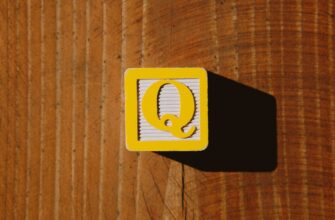- Bitcoin Halving Countdown Meaning: Your Guide to the Next Crypto Milestone
- What is Bitcoin Halving?
- Why the Bitcoin Halving Countdown Matters
- How Halvings Impact Bitcoin’s Price: History & Theories
- How to Track the Bitcoin Halving Countdown
- Preparing for the Next Bitcoin Halving: 4 Key Strategies
- Bitcoin Halving Countdown FAQs
Bitcoin Halving Countdown Meaning: Your Guide to the Next Crypto Milestone
The Bitcoin halving countdown isn’t just a ticking clock—it’s a pivotal event that shakes the crypto world every four years. As the timer winds down, miners, investors, and enthusiasts worldwide hold their breath. But what does this countdown actually mean? Simply put, it tracks the time until Bitcoin’s block reward for miners is cut in half—a deflationary mechanism coded into its DNA. This event slashes new supply, potentially fueling price surges and reshaping the market. In this guide, we’ll decode the halving countdown’s significance, its historical impact, and how to prepare for the next one.
What is Bitcoin Halving?
Bitcoin halving is a pre-programmed event in Bitcoin’s blockchain protocol that reduces the reward miners receive for validating transactions by 50%. Occurring roughly every four years (or every 210,000 blocks), it’s Bitcoin’s built-in answer to inflation control. Here’s how it works:
- Block Reward Reduction: Miners currently earn 6.25 BTC per block. Post-halving, this drops to 3.125 BTC.
- Fixed Supply: Halvings ensure only 21 million BTC will ever exist, with 94% already mined by 2024.
- Economic Scarcity: By slowing new supply, halvings mimic “digital gold” scarcity, boosting Bitcoin’s store-of-value appeal.
The next halving is projected for April 2024, making the countdown a critical market indicator.
Why the Bitcoin Halving Countdown Matters
The halving countdown isn’t just a timer—it’s a catalyst for market psychology and strategic shifts. Here’s why it captures global attention:
- Supply Shock Anticipation: Reduced new coins tighten supply, potentially driving prices up if demand holds steady.
- Historical Precedent: Past halvings (2012, 2016, 2020) preceded massive bull runs, with BTC gaining 8,000%+ post-2012.
- Miner Economics Miners face revenue cuts, forcing efficiency upgrades or shutdowns—centralizing mining power temporarily.
- Investor Sentiment: Countdowns fuel FOMO (fear of missing out), often spiking trading volume months in advance.
Tracking the countdown helps stakeholders time investments, adjust mining ops, or hedge against volatility.
How Halvings Impact Bitcoin’s Price: History & Theories
Halvings don’t guarantee price surges, but history shows a pattern of long-term appreciation. Let’s break it down:
- 2012 Halving: Reward fell from 50 to 25 BTC. Price rose from $12 to $1,150 in a year.
- 2016 Halving: Reward dropped to 12.5 BTC. BTC climbed from $650 to $20,000 by late 2017.
- 2020 Halving: Reward halved to 6.25 BTC. Despite a pandemic dip, BTC hit $69,000 in 2021.
Economists attribute this to:
- Supply-Demand Imbalance: Fewer new coins enter circulation amid growing adoption.
- Hodler Mentality: Investors hold tighter pre-halving, expecting future gains.
- Media Hype: Countdown coverage draws new buyers into the market.
Note: Short-term dips often follow halvings as miners sell reserves to cover costs.
How to Track the Bitcoin Halving Countdown
Stay ahead with these real-time tracking tools:
- Blockchain Explorers: Sites like Blockchain.com show current block height and halving estimates.
- Dedicated Countdown Sites: BitcoinBlockHalf.com offers a live timer, historical data, and mining stats.
- Crypto Apps: CoinGecko and CoinMarketCap include halving countdowns in their market dashboards.
- Mining Pools: Platforms like Foundry USA display block progress for miners.
Tip: Halving dates shift slightly based on block discovery speed—track blocks, not calendars!
Preparing for the Next Bitcoin Halving: 4 Key Strategies
Whether you’re a miner or investor, smart preparation is key:
- For Investors:
- Dollar-cost average before the event to mitigate volatility.
- Diversify into altcoins that may rally in Bitcoin’s wake.
- Avoid panic selling during post-halving dips—history favors patience.
- For Miners:
- Upgrade to energy-efficient hardware (e.g., ASIC miners).
- Join reliable pools to stabilize income post-reward cut.
- Hedge with cloud mining or staking alternatives.
Bitcoin Halving Countdown FAQs
- How often does Bitcoin halving occur?
- Roughly every four years, or after 210,000 blocks are mined.
- When is the next Bitcoin halving?
- Expected in April 2024, but the exact date depends on block discovery speed.
- Will Bitcoin’s price crash after halving?
- Short-term dips are possible, but all past halvings led to significant long-term gains.
- What happens when all 21 million Bitcoin are mined?
- Miners will earn only transaction fees (no block rewards), securing the network via fee incentives.
- Can the halving be canceled or changed?
- No—it’s immutable code. Changing it would require a near-impossible consensus across the decentralized network.
The Bitcoin halving countdown is more than a timer—it’s a rhythm that defines crypto’s most valuable asset. By understanding its mechanics and historical impact, you’re not just watching the clock; you’re preparing for the future of money.








